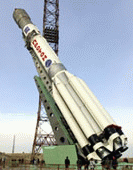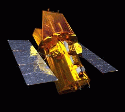
MSSL - University College, London

The .dat files found at ftp://ftp.aavso.org/public/calib are the output from my photometric pipeline, and list all stars in each observed field for which I have calibrated photometry. The file: ftp://ftp.aavso.org/public/calib/README.calib.txt describes how the data are collected and the format of each file. Note that the files are named roughly according to its common name (like v838mon.dat). There are also two master files: master_nofs.dat and master_sro.dat that include all stars calibrated from each respective site in single ascii files. These are quite large (about 500K and 100K stars respectively), so don't try to load them into Excel! Even for a single field, the number of stars might range from a few dozen to thousands, depending on magnitude depth and size of the CCD field of view. I calibrate *everything*.
The README file also gives you two options for plotting the files, either from GUIDE or from an excel spreadsheet. I am not sure these two options will work with the file versions since about 2005, when I added the (V-Ic) color index to the files, but try them and see. If they don't work, we can get Bill and Lew to update their programs. I also have a Mac OS X program that will plot the files from an X-window (my favorite option). Note that the .dat files are not really designed to be used manually. The coordinates are given in decimal degrees, and each line contains lots of information about magnitudes, errors, number of nights observed, etc. that make it difficult to parse and understand. There are lots of really faint stars with large error in each file. The sorting won't make sense to you. Use computer aides!
When a new object is announced, I often put it on the SRO program to be observed if it is visible from southern Arizona. The weather has been pretty poor this year, so it might take a week or two before I get enough photometry to release a .dat file. Once that is done, one of the sequence team members looks at the calibration file and chooses a set of comparison stars for the field. The criteria are essentially those given in John Toone's JAAVSO article: http://www.aavso.org/publications/ejaavso/v34n1/76.pdf choosing stars with a small color range, good range in magnitude and non-variable if possible. With only two or three nights of calibration, variability is not always obvious, but there are often other sources like ASAS or NSVS to check for the brighter stars to guard against including a variable in the sequence. These sequences are typically 10-20 stars, depending on the expected variability range.
Once a sequence is prepared, it is uploaded to the comparison star database (VSD) that http://www.stsci.edu/resources/software_hardware/specview/downloadis used for chart generation. After the sequence is uploaded, then any chart plotted will show the new sequence. VSP has two options for displaying the stored sequence: a check-box on the fill-in form that just displays the sequence and not the chart; and from the displayed chart, where there is a clickable link at the top that will display the sequence. This is the "photometry table" that I refer to, and is similar to the "CCD Box" that used to be displayed directly on the chart, but with much more information (such as coordinates).
On the AAVSO web site at ftp://ftp.aavso.org/public/calib/ are a set of calibrations that I did during my years at USNO, plus a year or two of Sonoita data. These calibrations have a .dat extension, and are ASCII text files that contain the RA/DEC/magnitudes of stars in each field. There are several hundred of these.
Lew Cook wrote a plotting program for Excel that took those files and presented them in a graphical format. He has recently revised that program. It can be obtained from http://www.lewcook.com/AAHPlot.htm
Please report any difficulties with it to the AAVSO, and we will forward the queries to Lew.
Due to the continued progress of AAVSOnet and our photometric surveys and the overall improved standard of our existing charts and sequences, the AAVSO Charts and Sequences Team is now able to prioritize creating new sequences for variable stars as new photometry becomes available.
To aid in meeting the demand for new sequences for variable stars that currently do not have comparison stars selected, we will be accepting requests and tracking progress via a new procedure. If you think your star needs comparison stars, here is what you do.
Enter the name of your star in the name field of the chart plotter, VSP. http://www.aavso.org/vsp
Check to see if comparison stars have already been assigned to this field in the appropriate range of magnitudes and proximity to your variable star.
If VSP does not recognize the name of your star, it may not have an AUID assigned to it and VSP will not be able to plot a chart. If this is the case, enter the coordinates of your variable star into the RA and Declination fields to plot a chart. Check to see if comparison stars have already been assigned to this field in the appropriate range of magnitudes and proximity to your variable star.
Once you are sure no suitable comparison stars are available through VSP, check the list of current sequence requests to see if calibration of the field of your star has already been requested. The list is here: http://trunc.it/daygy
To make a formal request that a sequence be created for your variable
star send an email to compstars@aavso.org and include the following
information.
- The name or designation of your variable star
- The coordinates of the variable star in decimal, sexagesimal or both formats.
- The magnitude range of the variable, if known.
- Indicate whether or not the request is time sensitive or urgent,
as for a new or transient stellar event.
You will receive an email notification when the new sequence is generated and available through the VSP.
If no suitable photometry is currently available your request will be added to a "queue" and periodically checked against survey progress to see when data has become available. You can view the list of fulfilled and outstanding requests here: http://trunc.it/daygy
Time sensitive or urgent requests will be assigned the highest priority. If photometric data is not available a calibration request will be forwarded to AAVSOnet and a sequence produced as soon as data becomes available.
| filetype | letter |
|---|---|
| original | o |
| overscan corrected | v |
| zero (bias) corrected | z |
| flat corrected | f |
| trimmed | t |
| bad pixels fixed | b |
| cosmic rays fixed | c |
How to start 8-bit IRAF on my computers so that ximtool can be used:
% vncserver -depth 8 -cc 3
% vncviewer microquasar:1 (window number from vncserver output)
or just use:
% ds9 (to start saoimage - alternative to ximtool which does not need 8-bit graphics)
vncserver startup files (xstartup) are in .vnc
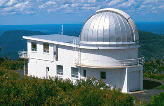
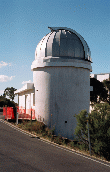

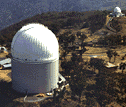
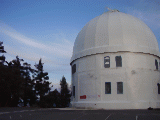

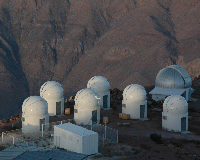
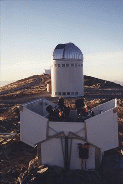






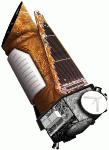


Charts:
This is my archival stuff. AAVSO observers please get the latest HMXB charts from the AAVSO HMXB Chart page.




